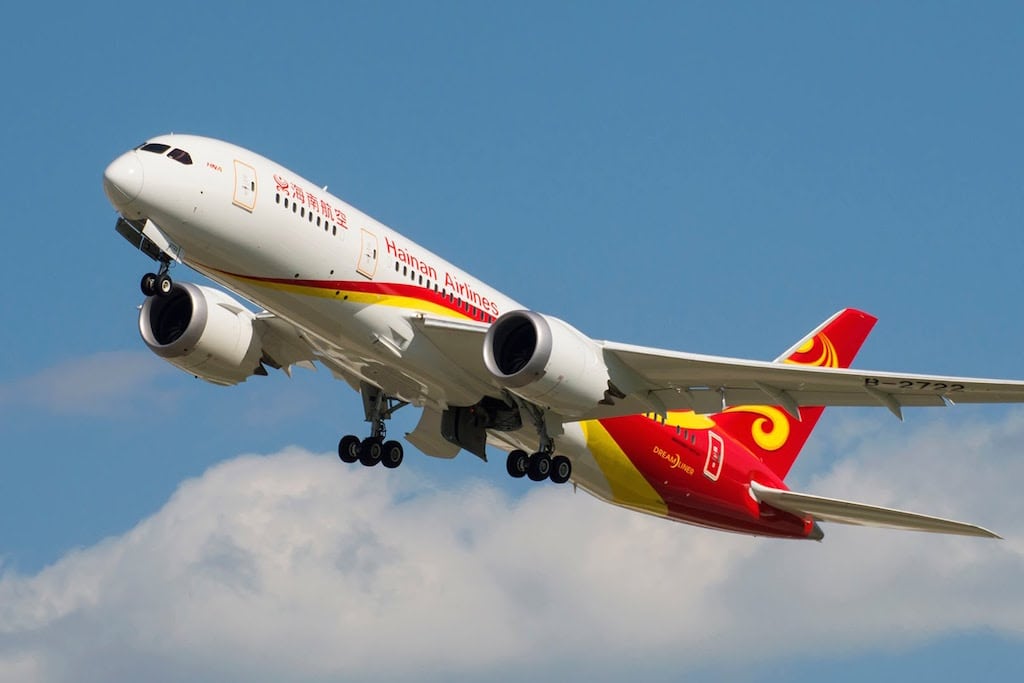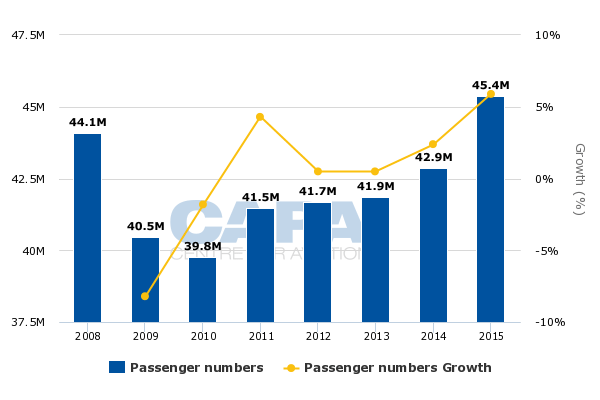Skift Take
The new Hainan Airlines service will help boost Las Vegas' gambling operations and drive higher convention attendance from Asia.
Hainan Airlines will begin flying the first non-stop route between China and Las Vegas beginning December 2, rewarding more than a decade of advocacy efforts on the part of McCarran International Airport and the Las Vegas Convention & Visitors Authority.
The three-times weekly flight between Beijing Capital International Airport and America’s gaming capital will be aboard a Hainan Airlines Boeing 787 Dreamliner.
According to Rosemary Vassiliadis, director of aviation for the Clark County Department of Aviation, the city’s robust visitation numbers coming out of the recession, and the fact that Las Vegas isn’t a hub for any of the big three U.S. airlines, factored into Hainan’s decision to launch the new non-stop service.
McCarran posted its fifth consecutive year of growth in 2015 with 45.4 million passenger arrivals, up 5.8 percent over 2014. As of June 30 this year, overall arrivals were up another 5.7 percent year-to-date, which could potentially make 2016 the airport’s busiest 12 months on record surpassing the nearly 48 million passengers in 2007.
June 2016 data also show that international carrier arrivals jumped seven percent year-over-year, but that represents only eight percent of total volume.
“China has alway been on our radar, and the Chinese carriers realize that the demand is there, and we have the technology and infrastructure to be ‘China-ready,'” said Vassiliadis.
Rossi Ralenkotter, president/CEO of the Las Vegas Convention & Visitors Authority (LVCVA), added via email, “China is an area where we have seen steady growth in visitation, and we will continue to focus on experiences and amenities that cater to our Chinese guests. With these first-ever flights from China to Las Vegas, we are anticipating more than $33.5 million in annual economic impact.”
Chasing China
McCarran International has been preparing for this day for over a decade, most notably with the opening of the the new Terminal 3 expansion in in 2012. The facility features self-boarding and self-ticketing kiosks for customers inside the terminal, and self-docking technology for pilots.
That technology was implemented with the Chinese carriers in mind.
“So we have all of those technologies in place in Terminal 3, which we’re now expanding into Terminal 1, and we’re kind of waiting for a lot of the airlines to catch up,” said Vassiliadis. “We have some airlines that can use that. It will be great when all the other ones can use it.
Looking ahead, McCarran is investing $51 million in new tunnel infrastructure to convert some of the domestic gates into international gates connected via new sterile corridors to customs and immigration services. When the work is complete next year, the airport will be able to welcome six more international wide-body aircraft, including the double-decker Airbus A380.
“What that is going to do is going to give us the flexibility to accommodate additional simultaneous international operations,” Vassiliadis said. “That’s golden when it comes to calculating the efficiency and the yield for these types of flights.”
She added that the collaboration with the LVCVA was paramount to selling Hainan on Las Vegas because the airline’s decision to launch this route depended heavily on the fact that the destination could provide year-round demand. In addition, as a discretionary destination, Las Vegas needed to show it’s somewhat recession-proof by attracting a mix of leisure and business traffic.
“About 80% of our passengers that come through the airport are origin and destination, meaning we don’t have a lot of connecting traffic, who are made up of tourists and conventioneers,” Vassiliadis explained. “Tourists of course are very discretionary, and as we all learned during the recession, conventions are still going to happen but companies will send maybe 2-4 delegates instead of the 10-15 that they maybe sent in the past.”
Therefore, it’s the mission of the LVCVA to communicate all of the the efforts that the bureau is involved in to drive consistent visitation numbers, which as seen in the chart below have been achieving record levels year-over-year.
“The international carriers want to know how we’re going to fill the plane, and very specifically how we’re going to sell the front end of their plane in business or first-class,” said Cathy Tull, senior VP of marketing at the LVCVA. “In working with McCarran, we talk about who’s coming to Las Vegas today, how many meetings we have, and the fact that we’re the number one trade show destination in the country, which are things that the carrier may not know. Business travel is what’s going to drive the front of their plane.”
Source: CAPA Centre for Aviation
Have a confidential tip for Skift? Get in touch
Tags: china outbound, gaming, las vegas, meetings and events, tourism
Photo credit: A Hainan Airlines Boeing 787-8 will fly the new non-stop route between Beijing and Las Vegas. Hainan Airlines / Bloomberg

